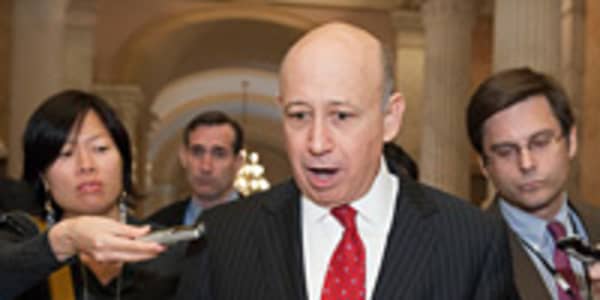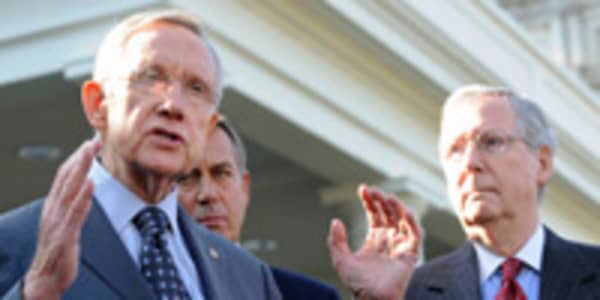From the start, Mitt Romney’s campaign was premised on the belief that the economy’s struggles would make President Obama politically vulnerable. Grim economic statistics, the assumption went, would make Mr. Romney’s argument for him.
There is little evidence that the strategy is working, at least not to the degree that Mr. Romney had hoped. Polls show voters growing somewhat more optimistic, and increasingly willing to trust the president as much as they do Mr. Romney on jobs and the economy.
With the race now in the home stretch and the debates starting on Wednesday, Mr. Romney’s campaign appears to be shifting course, abandoning its hope of making the election a simple referendum on Mr. Obama’s jobs record.
Instead, Mr. Romney intends to hit the White House with a series of arguments — on energy, health care, taxes, spending and a more direct attack on Mr. Obama’s foreign policy record.
Some top aides at Mr. Romney’s campaign headquarters in Boston fear their simple message has become muddled. One suggested last week that Mr. Obama’s campaign motto, “Forward,” has been more effective — easy to understand, easy to remember and easy to say — than Mr. Romney’s “Believe in America” slogan.
But advisers say Mr. Romney is armed with a litany of arguments for his face-off with Mr. Obama in Denver this week. And in television advertisements and speeches in the days ahead, the campaign plans to frame the election as a critical choice for voters.
In one effort to move beyond the economic argument, Mr. Romney accused Mr. Obama of major foreign policy failures in an opinion article published on Monday in The Wall Street Journal. Mr. Romney said the president had allowed the nation’s influence to atrophy by “stepping away” from its allies.
“Amid this upheaval, our country seems to be at the mercy of events rather than shaping them,” Mr. Romney wrote. “We’re not moving them in a direction that protects our people or our allies. And that’s dangerous.”
The Republican campaign also hopes to seize on concerns about the nation’s growing debt amid polling that suggests Mr. Romney still retains a sizable edge over the president regarding who will rein in spending in Washington.
“Our message is very clear, which is we cannot afford four more years like the last four years, and we need a real recovery,” Ed Gillespie, a senior adviser to Mr. Romney, said after briefing reporters on Monday morning. “Whether it’s job creation, health care, energy or debt, the message is we cannot afford four more years like the last four years. We know this resonates with voters.”
Democrats have been trying all along to turn the 2012 race into a “choice” election between the policies and personalities of both candidates, so that the single focus is not the economy. And while it is too soon to know if the Republicans’ multipronged strategy will hurt Mr. Obama, the election is now being fought on the president’s preferred ground.
“They had no choice but to move on to our playing field,” said Senator Charles E. Schumer, Democrat of New York. “When they go to the choice argument, they are stuck.”
When Mr. Romney announced his candidacy in the summer of 2011, his top advisers — in particular his senior strategist, Stuart Stevens — repeatedly said they believed that the country’s economic woes would keep voter attention focused squarely on the president. Mr. Romney embraced that approach from the beginning with a YouTube video announcing his candidacy in which he said, “President Obama’s policies have failed.”
Mr. Romney has seized on weak job numbers to argue that Mr. Obama has been unable to repair the economy, and on Friday the federal government will issue its report for September, including an updated unemployment estimate.
But polls suggest that the economic argument has not worked as Mr. Romney had hoped. A CNN/ORC International poll, conducted Sept. 28 to Sept. 30 and released on Monday, showed the candidates tied on the question of who would best handle the economy. Other polls indicate that voters increasingly believe the country is headed in the right direction.
After the political conventions, Mr. Romney’s campaign had planned to use a new slogan to highlight the president’s economic failures: “This isn’t what a recovery looks like.” The phrase was used a few times, but appears to have faded as the campaign has embraced a broader message.
Aides stress that Mr. Romney will continue to press the economic case against the president. But rather than focusing on Mr. Obama, they plan to stress that voters need to make a choice between two men with different visions of the world. In the briefing with reporters on Monday, aides used the word “choice” more than a dozen times.
Aides said their warnings about “another four years” will provide the campaign with an opportunity to demonstrate that Mr. Romney is the better choice and has a better plan for America when it comes to the economy, foreign policy, health care and energy.
“It’s important for us to lay out the important contrast, the important choice these voters face, on the issues they care about,” said Kevin Madden, a spokesman and senior adviser to the Republican campaign.
Michael Barbaro and Jeremy W. Peters contributed reporting.
This story originally appeared in The New York Times.




